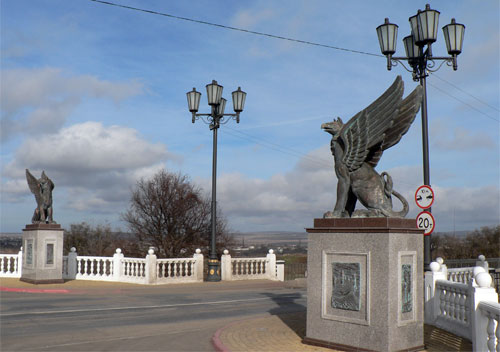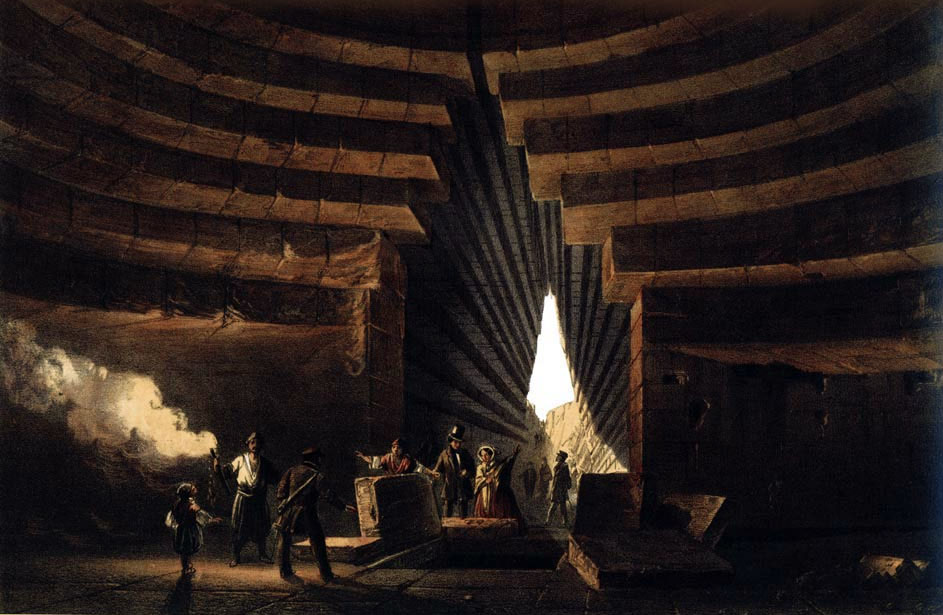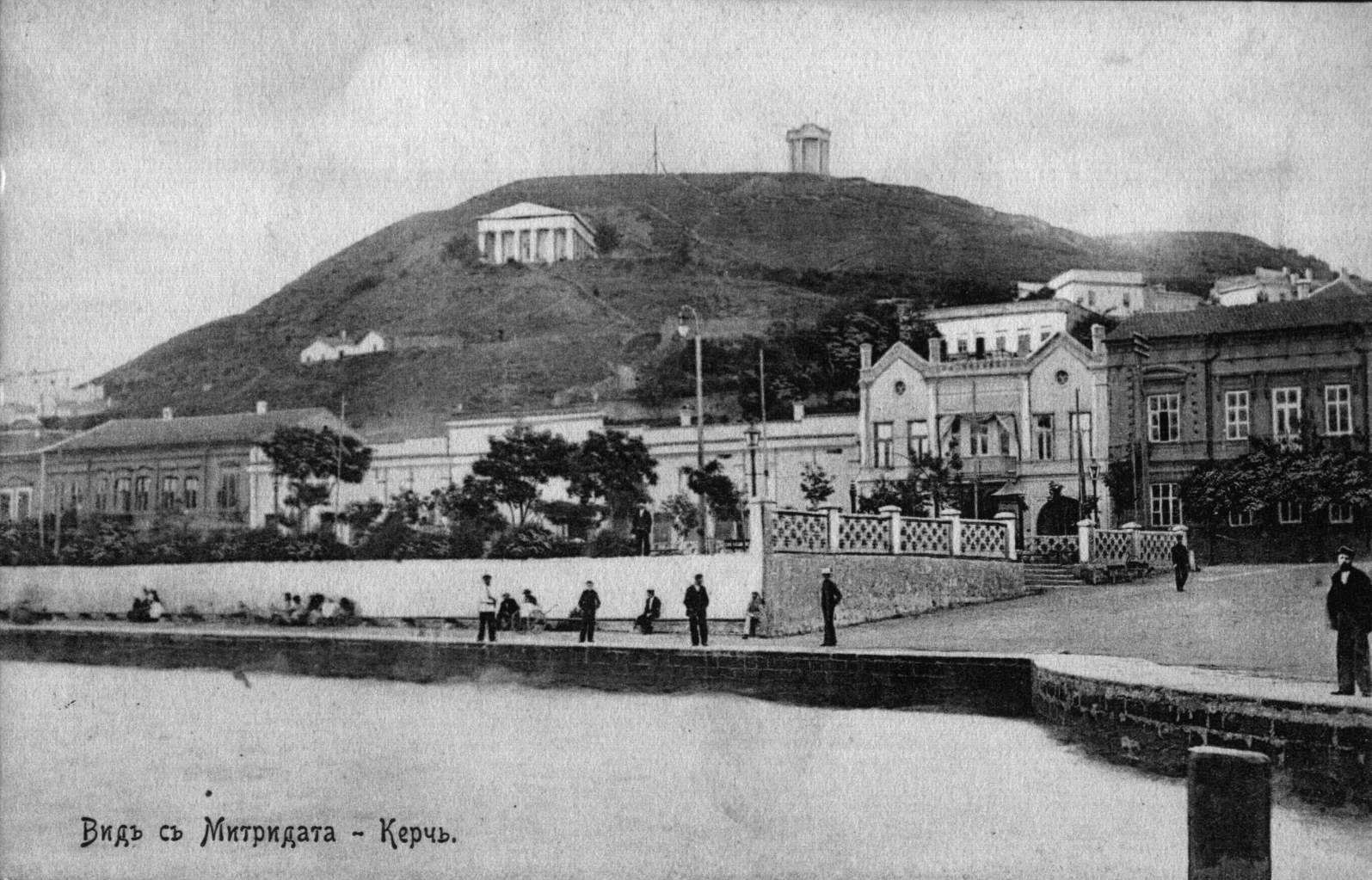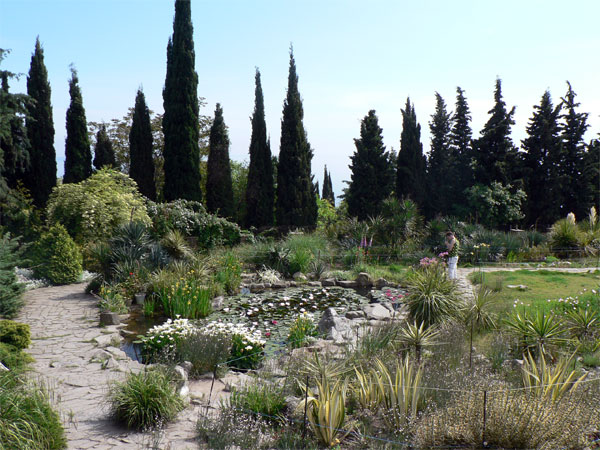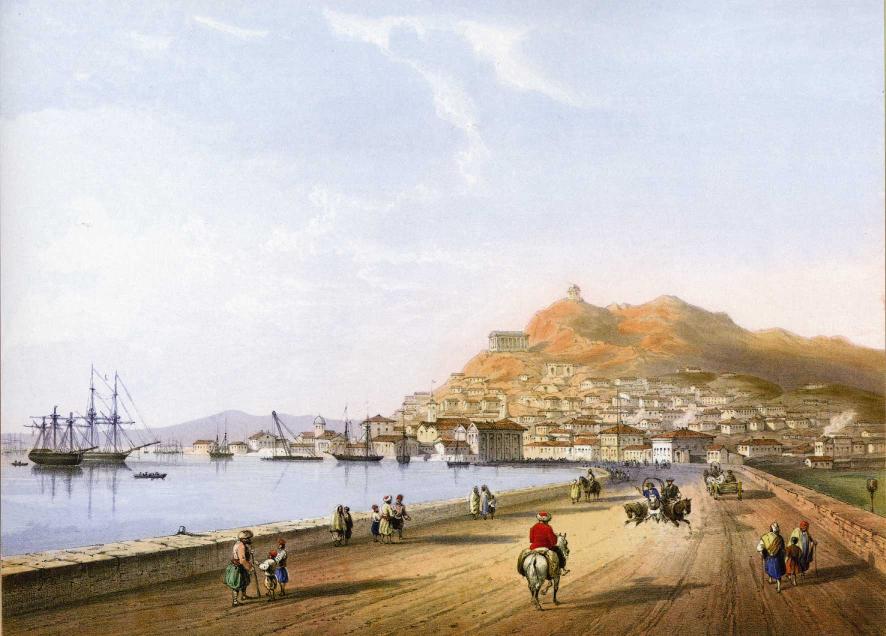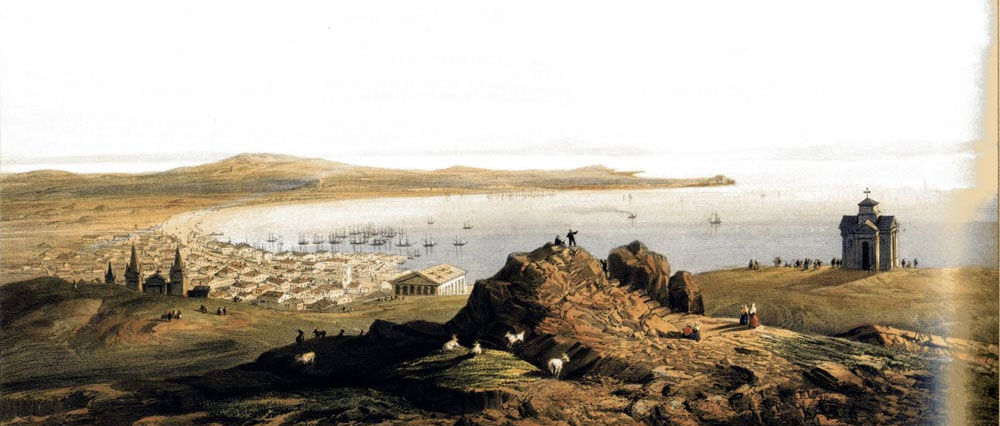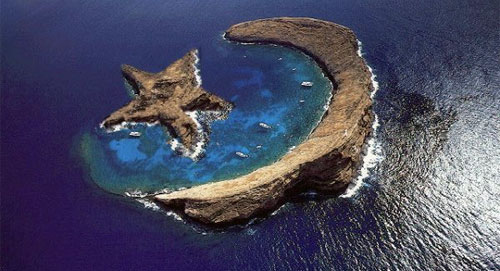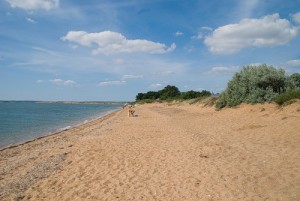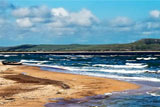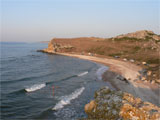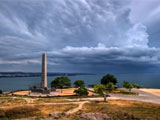Минеральные воды — это воды из природных источников, которые наполнены уникальным составом. Как правило, в химический состав таких вод входят газы, органические вещества и природная радиоактивность — радон. При применении минеральных вод, на организм оказывается благоприятное лечебное действие.
Читать полностью «Крым издревле известен своим минеральными источниками»
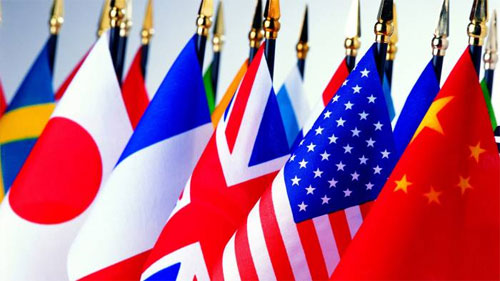
Бюро переводов это предприятие, предоставляющие специфические услуги. Если нужно сделать перевод, обойтись без услуг бюро очень сложно. Услуги перевода — это не просто перевод текста с одного языка на другой. Сегодня бюро переводов — это объединение большого количества людей, владеющих иностранными языками. Успешная деятельность фирмы в первую очередь зависит от умения переводчиков грамотно подать переведенный текст, помимо обычного знания иностранного языка, необходимо владеть специфической терминологией, разбираться в тонкостях идиом разных стран, для точного перевода. Читать полностью «Услуги бюро переводов в Керчи»
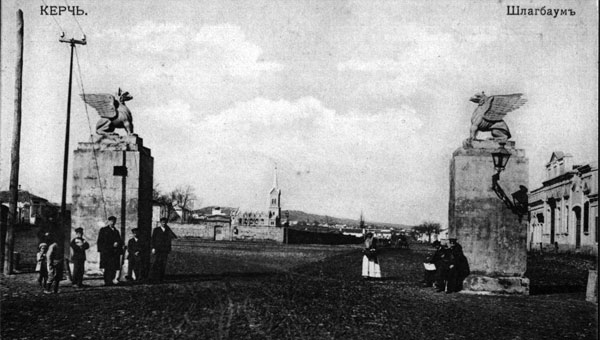
At the city gate
Once, to enter Kerch everyone had to pass through the city gate with a barrier and guards. The entrance to the city was decorated with gryphons on the top of high columns. Shlagbaum Street and Shlagbaum Square was a sort of a border between the city and the Russian-Tatar forstadt. The city’s citizens called the place «Shlambova» or «Eagles», and the Tatars named it «Coosh-Cape» or «the Birds’ Gate». From the gate there ran a street and in the middle of the street there was a park where people could stroll. Later, the street was named after the famous surgeon N. I. Pirogov. The city hospital, the handicraft school, and an institute for young ladies trained in noble etiquette (founded by the city governor Z.S. Kherkheulidze) were all located on this street. P.A. Dubrux, one of the founders of the Kerch Museum of Antiquities, and Yu.C. Terapiano (Toropiano), a famous Russian poet, writer, literary critic and publicist, lived on this street for some time. On Sh’lagbaum Square, there was a trade school (now school № 9 named after P.P. Shmidt) and the main city’s Orthodox Temple, the Cathedral of Holy Trinity. The Cathedral functioned until 1931 and was also the place where a famous priest named St. Luke (V.F. Voyno-Yasenetsky) was baptized.
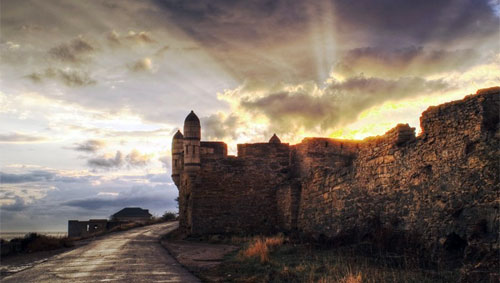
Yenikale Fortress is of great interest as a monument of fortification. In the early 18th century, Russia, under Peter the Great longed to become a powerful marine state. The Turks, frightened by this potential threat, erected Yenikale Fortress where a small fortress, called Kilisedzik, was previously located. Zaporozhian Cossacks exploded Kilisedzik in 1631. Yenikale Fortress became a real obstacle for the ships traveling from the Sea of Azov to the Black Sea. A small town gradually formed in the southern territory of Yenikale Fortress and became the center of the Kerch-Yenikale’ region up to 1826. After joining Russia the significance of the fortress gradually decreased, and by 1835 the fortress became totally useless. During the Crimean War, the fortress was urgently prepared for the battles, but it failed to resist the Anglo-Franco-Turkish invasion. The fortress’s failure to protect the city during the Crimean War marked the end of its usefulness, and it was gradually ruined. In 1980’s, the fortress was partially restored and has since become a popular attraction for tourists.
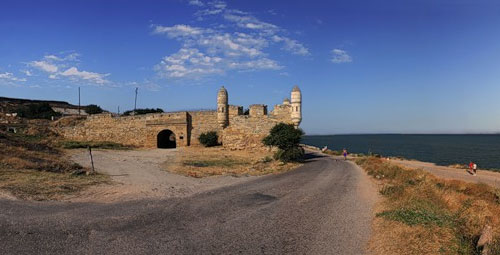
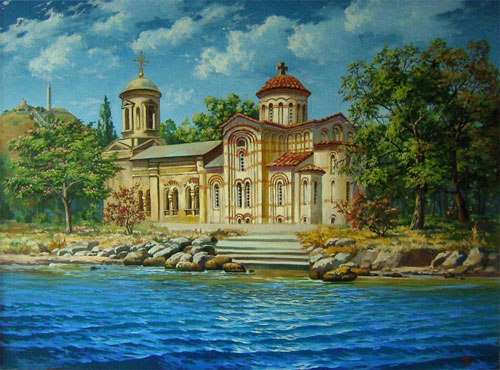
The Greeks from Miletus founded ancient Panticapaeum, the forefather of the modern city, in the early sixth century ВС.
St. John the Baptist’s Temple is a remarkable architectural monument. The most ancient eastern part of it was built in the 9-1 Oth centuries AD. Earlier, before the temple was constructed, there had been a Christian basilica, the columns of which were possibly used in the construction of the temple. On one of the remaining columns, there was an inscription dating back to AD 757. The temple’s design is that of a cross-vaulting type, which was widely spread in the Byzantium. Presently, examples of similar architectural constructions can be found in Bulgaria. The temple was reconstructed in the 14th century, and during the 19th century two annexes were added to it, utterly changing its exterior. The first annex was the western-side chapel with a small bell-tower, and was reconstructed by architect A. Digbi in 1845. Later, in 1896, the northern-side chapel was erected on the place of the former vestibule dating from the first third of the 19th century. The church was turned into a museum during the Soviet period and restored by local craftsmen in the 1970’s -1980’s (architect E. I. Lopushinskaya). St. John the Baptist’s Temple is the most ancient Orthodox Temple in Eastern Europe. In 1990 it was given back to the people and became the city’s Cathedral.
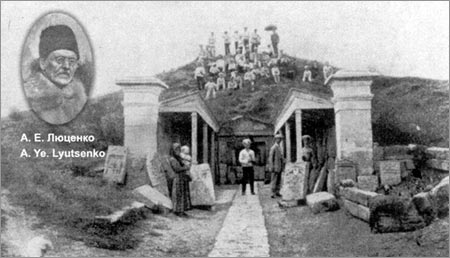
Melek-Chesme Barrow, 1858
Melek-Chesme Barrow is another burial construction in Kerch with a well-preserved monumental crypt. As well as the Royal Barrow, it was erected in the forth century ВС. It was up to 40ft/12m high, dominating all the other neighboring mounds. It was named after the Melek-Chesme River, which meant «Angel’s Spring». The archaeologist A. Lyutsenko, the head of the Museum of Antiquities, excavated it in 1858. The crypt appeared to have been robbed. Among the finds only a small bronze bracelet with gold snakes on the ends deserved attention. After restoration this remarkable monument of ancient architecture became open to visitors in 1871, and in due course it became the Museum of Epigraphic Monuments. During the World War II, the famous Taman sarcophagus was kept next to it. And only in 1995, after more than half-a-century break, Melek-Chesme Barrow was opened for visiting again.
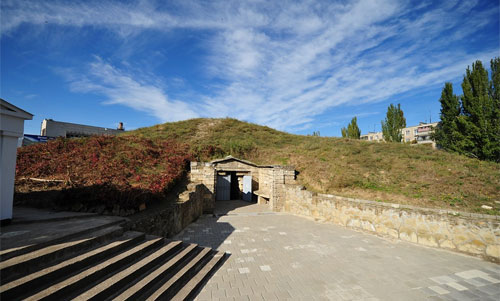
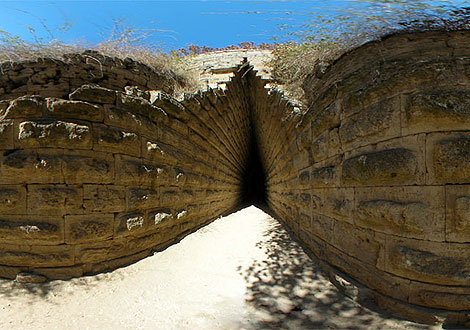
Tsarskiy Barrow (Royal Barrow) is one of the most impressive sights in Kerch, the unique memorial of ritual architecture of the forth century ВС. The archaeologist A. B. Ashik excavated it in 1837 and enraptured by its beauty, he called it Tsarskiy Barrow. It was possibly the burial place of Bosporan kings, Leukon I or Paerisades I, it was robbed in ancient times. Early Christians used its burial chamber and the dromos as a refuge during persecutions. They had their secret meetings inside the mound.
The Tatars seemed to be well acquainted with the inner construction of the tomb long ago. They called it «Nar-oba» meaning «the pomegranate burial mound», as the rustic work decorating the dromos walls resembled the grains of this southern fruit. In the middle of the 1860’s, the burial mound was restored and became a guarded sight for tourists. Later on, various stelae, tombstones and several sarcophagi from the Kerch Lapidary Museum were placed along the walls of the dromos and at the entrance into the mound.
Mountain Mithridates has been a witness to the centuries-old history of the city and got its name in the beginning of the 19th century. According to legend, the mount is the burial place of an ancient «king of kings», whose name was Mithridates. It was first thought that the burial place was at the site known as the «Zolotoy kur-gan» («Golden Barrow»), and then it was believed that the king was buried in the mount nearest to the city, called «The First Armchair of Mithridates» or simply «Mithridates». On top of «The First Armchair of Mithridates» there was a throne-shaped jut, where, according to the legend, the Bosporan king enjoyed sitting. Currently, it’s the place of the Eternal Fire.
In ancient times there was a citadel on the top of the mount, and to the east of it stood the Temple of Apollo. This is also the location of the 1830’s mausoleum where Kerch-Enikale governor I.A. Stem-pkovsky was buried. Later, during World War II, the majestic Obelisk of Glory was erected there to honor the memory of the defenders of Kerch (designed by architect Kiselyov). Since then, the monument has become a symbol of the herocity, and Mithridates is the traditional place for the Victory Day celebration with its torch-fire parade, fire-works, meeting and repast in the memory of the lost soldiers.
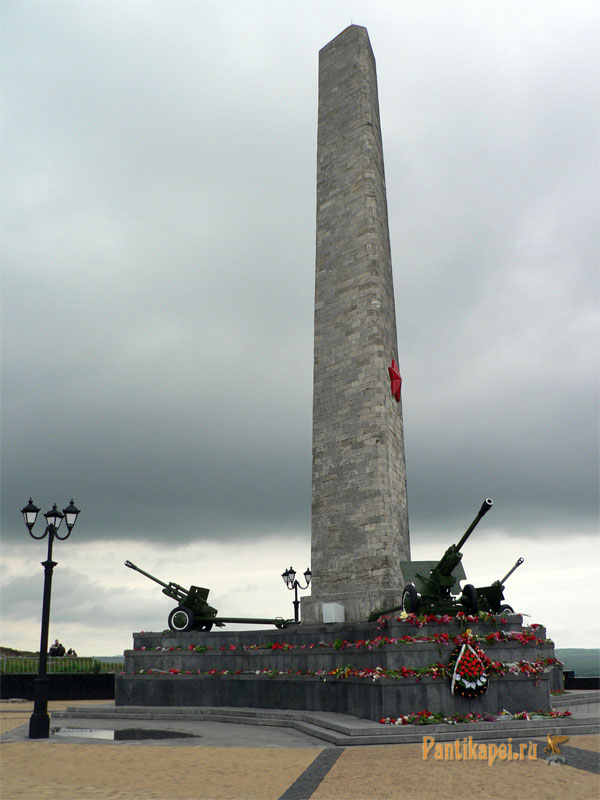
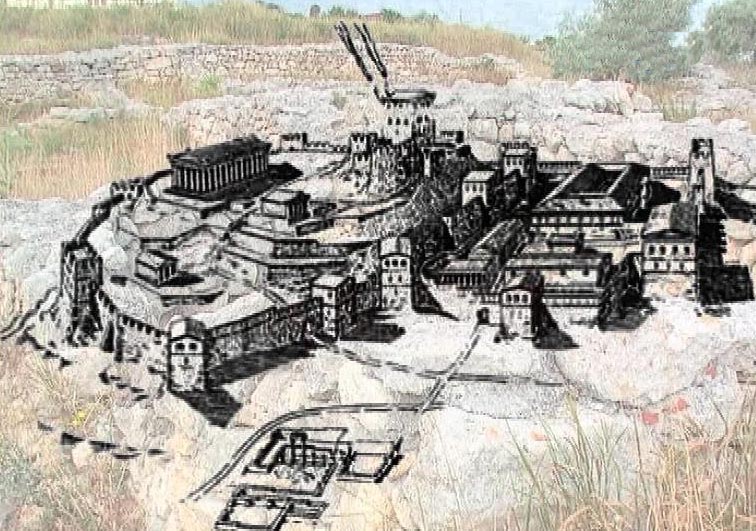
Panticapaeum
According to some data, the ancient city was named after «the river Panticapa passing by». However, judging by the origin of the word, it might have been the name of the strait as well, as its translation means «Fish Way» or «Sea River.» The first dwellers settled on the mount now called Mithridates. Gradually, they occupied and developed not only the mount and its slopes, but also the adjoining lowland.
Panticapaeum was the capital of the Bosporan kingdom for 850 years, and this period was considered to be its heyday. The city was the biggest center on the northern coast of the Black Sea. The fortification walls surrounded Panticapaeum Acropolis, the Royal Palace, majestic temples, and other constructions. The city square, called «agora», and the theatre were also located there. The walls surrounded not only the upper town, but also dwelling quarters of the citizens in the harbor. In it, behind the fortified mole, ships were sheltered and repaired.
However, the later centuries in the history of Panticapaeum were not as successful. Investigation into Pantica-peaum’s history is merited to several generations of archaeologists, beginning with P. Dubrux.
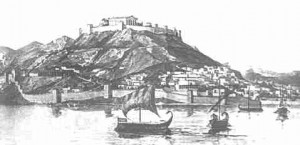
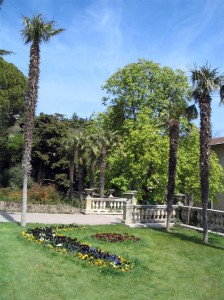 Но, пожалуй, наибольшей популярностью и известностью пользуется Крымский Никитский Ботанический сад. Созданный при поддержке императора Александра I, в 1812 году парк быстро выполнял возложенные на него обязательства. Ученый Х. Х. Стевен — основатель парка стремился ускорить развитие сельскохозяйственного производства, акклиматизацию и селекцию южных плодовых деревьев. Сад активно сотрудничал с Европейскими и Азиатскими ботаническими учреждениями и вскоре наполнился уникальной коллекцией разных видов, форм и сортов растений. Читать полностью «Никитский Ботанический сад — шедевр паркового искусства»
Но, пожалуй, наибольшей популярностью и известностью пользуется Крымский Никитский Ботанический сад. Созданный при поддержке императора Александра I, в 1812 году парк быстро выполнял возложенные на него обязательства. Ученый Х. Х. Стевен — основатель парка стремился ускорить развитие сельскохозяйственного производства, акклиматизацию и селекцию южных плодовых деревьев. Сад активно сотрудничал с Европейскими и Азиатскими ботаническими учреждениями и вскоре наполнился уникальной коллекцией разных видов, форм и сортов растений. Читать полностью «Никитский Ботанический сад — шедевр паркового искусства»
Panticapaeum — Kerch
The Greeks from Miletus founded ancient Panticapaeum, the forefather of the modern city, in the early sixth century ВС. Being ruined in the fourth century AD by the Huns, the city gradually revived and existed into the medieval epoch. Kerch has always been ethnically multinational. Through centuries it belonged to different states, each time changing its name.
«Kerch»(«Kersh») became the name of the city in the 16th century. Under this name it joined Russia. In fact, it was a fortress at that time. In 1821 Kerch was united with Yenikale fortress and given the status of a city. Since then, Kerch began to be reconstructed according to the general plan worked out by the architect F. Shalle. Later, the plan was changed several times. As a result of its realization, there rose a city in the best architectural traditions of Russian classical style.
Kerch has always enraptured the contemporaries. It was called «small Odessa» and considered to be one of the best cities in the Crimea «judging by its appearance, well-planned and well equipped territory.»
На другом берегу Черного моря расположена древняя, прекрасная страна — Турция. Как государство, Турция относительно молода, образована в начале 1920-х гг. Страна хорошо известна во всем мире, как курорт. Высокий уровень сервиса, разнообразие отелей и разумные цены — все это привлекает туристов из Америки, Европы и Азии. Читать полностью «Удивительная Турция»


